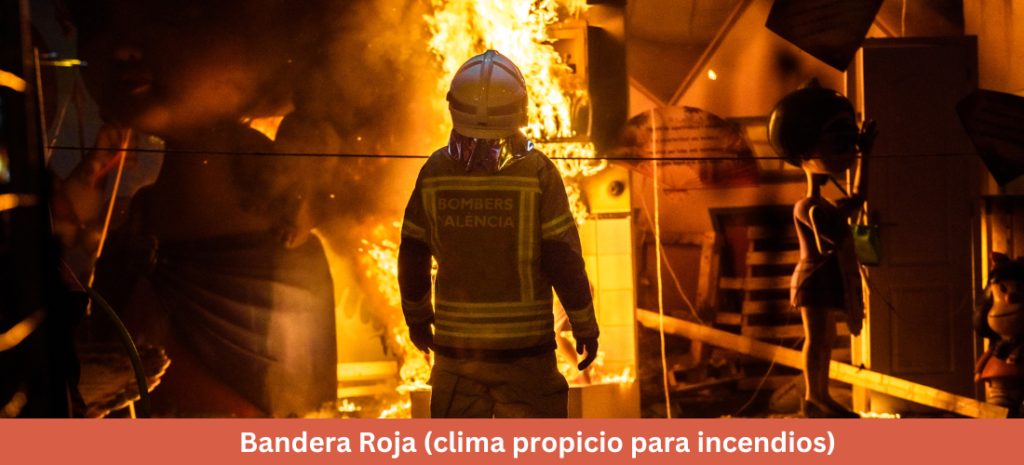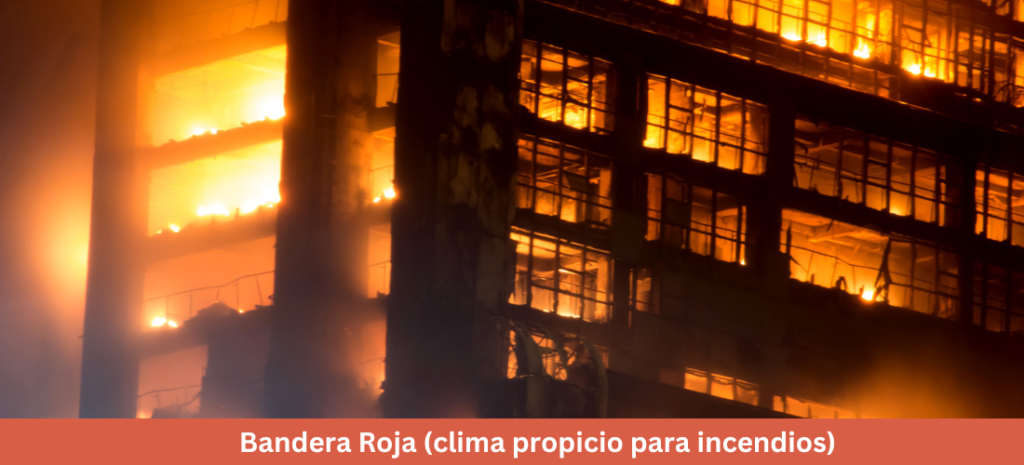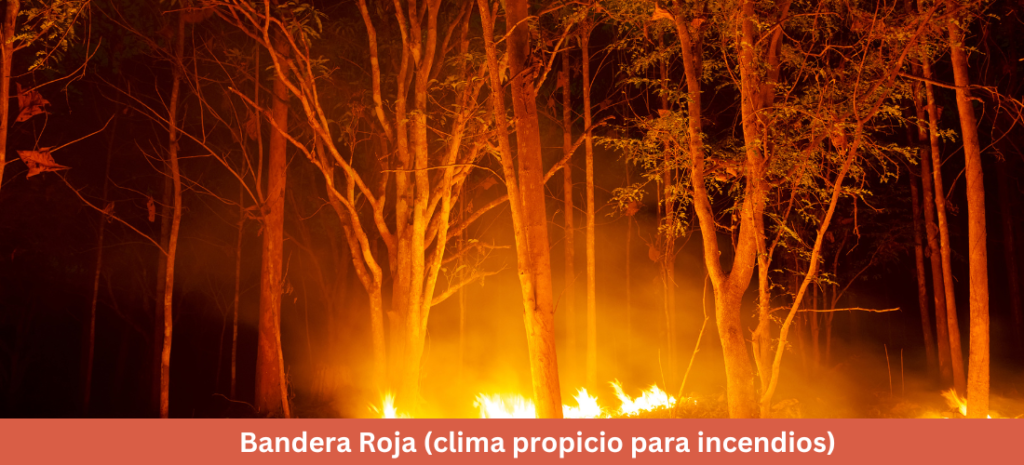Introduction to Wildfire Risks
Wildfires, also known as forest fires or bushfires, pose a significant threat to ecosystems, property, and human lives. The term “red flag” is often used to describe weather conditions that are particularly conducive to the rapid spread of fires. These conditions include low humidity, high temperatures, strong winds, and dry vegetation. Understanding and recognizing these factors can help in preparing for and mitigating the devastating impacts of wildfires.
Understanding the “Red Flag” Warning
A “red flag warning” is issued by meteorological agencies when there is an imminent threat of fire due to specific weather patterns. This warning is crucial for firefighting agencies, local authorities, and residents in vulnerable areas. Here are the key elements that contribute to a red flag warning:
Low Humidity
Humidity levels below 20% significantly increase the likelihood of wildfire ignition and spread. Dry air extracts moisture from vegetation, making it highly flammable. Regular monitoring of humidity levels is essential during fire seasons.
Strong Winds
Wind is one of the most critical factors in wildfire behavior. Strong winds can carry embers over long distances, igniting new fires far from the original source. Winds also provide fresh oxygen to fires, fueling their intensity and spread. Gusts above 20 mph are particularly concerning.
Dry Vegetation
Vegetation serves as the primary fuel for wildfires. During periods of drought, plants and trees lose their moisture content, turning into tinder that can ignite with the slightest spark. Monitoring vegetation dryness through various indices, such as the Keetch-Byram Drought Index, helps in assessing fire risk.
Read Also: digitalnewsalerts.com
Impact of Wildfires on the Environment and Society
Wildfires have far-reaching consequences beyond the immediate destruction of forests and homes. They impact air quality, water supply, wildlife habitats, and human health. Understanding these impacts underscores the importance of preventive measures and effective response strategies.
Environmental Impact
Wildfires can lead to soil erosion, loss of biodiversity, and alteration of landscapes. The combustion of vegetation releases large amounts of carbon dioxide, contributing to climate change. The loss of forests, which act as carbon sinks, exacerbates this problem.
Health Implications
The smoke from wildfires contains fine particulate matter (PM2.5), which can penetrate deep into the lungs, causing respiratory problems, cardiovascular issues, and aggravating pre-existing health conditions. Prolonged exposure to wildfire smoke is particularly harmful to vulnerable populations, including children, the elderly, and those with chronic illnesses.
Economic Consequences
The economic impact of wildfires is substantial, including costs related to firefighting efforts, property damage, and loss of tourism revenue. The long-term economic burden also includes the rehabilitation of affected areas and support for displaced communities.
Fire Bans and Restrictions
To mitigate the risk of accidental fires, authorities may impose fire bans and restrictions on activities such as campfires, burning debris, and using fireworks.
Increased Firefighting Readiness
Firefighting agencies increase their readiness by positioning resources strategically, conducting patrols, and implementing fire suppression measures.
Preventive Measures and Mitigation Strategies of Bandera Roja (clima propicio para incendios)
Proactive measures can significantly reduce the risk of wildfires and mitigate their impact. These strategies involve a combination of community education, landscape management, and technological advancements.
Community Awareness and Preparedness
Educating communities about fire safety, evacuation plans, and the importance of creating defensible spaces around properties is crucial. Local authorities should conduct regular drills and provide resources to help residents prepare for wildfire emergencies.
Vegetation Management
Managing vegetation through controlled burns, thinning, and removal of dead or diseased plants can reduce the available fuel for wildfires. Creating firebreaks, which are gaps in vegetation that act as barriers to fire spread, is another effective strategy.
Technological Innovations
Advancements in technology offer new tools for wildfire prevention and response. Satellite monitoring, drone surveillance, and predictive modeling help in early detection and assessment of fire risks. These technologies enable more efficient allocation of firefighting resources and timely evacuation of threatened areas.
Major Causes of Red Flag Alerts (Weather Conditions Favorable for Wildfires)

Red flag alerts are critical warnings issued by meteorological agencies indicating weather conditions that are highly conducive to wildfires. Understanding the major causes of these alerts is essential for effective wildfire prevention and response. In this article, we will explore the primary factors that lead to red flag alerts and their implications.
1. Prolonged Drought Conditions
Drought is one of the most significant factors contributing to red flag alerts. Extended periods of dry weather lead to extremely low moisture levels in vegetation, making it highly flammable. During droughts, even the smallest spark can ignite a wildfire, which can then spread rapidly.
How Drought Conditions Develop
- Lack of Precipitation: Prolonged periods without rain deplete soil and plant moisture.
- High Temperatures: Increased evaporation rates during hot weather exacerbate dryness.
- Climate Change: Rising global temperatures contribute to more frequent and severe droughts.
2. High Winds
Strong winds are a critical component in the issuance of red flag alerts. Winds can spread embers over long distances, igniting new fires and causing existing fires to spread uncontrollably. Wind-driven wildfires are particularly dangerous because they can change direction rapidly, complicating firefighting efforts.
Impact of High Winds on Wildfires
- Increased Fire Spread: Winds push flames across large areas quickly.
- Spot Fires: Embers carried by the wind can start fires far from the main blaze.
- Reduced Visibility: Wind-blown smoke can reduce visibility, hindering evacuation and firefighting efforts.
3. Low Humidity Levels
Low relative humidity dries out vegetation, making it more susceptible to ignition. When humidity levels drop below critical thresholds, the moisture content in leaves, grasses, and other plants decreases significantly, increasing the risk of wildfires.
Factors Leading to Low Humidity
- Seasonal Changes: Late summer and fall often see lower humidity levels.
- Geographic Factors: Certain regions, such as deserts, naturally have low humidity.
- Weather Patterns: High-pressure systems can lead to prolonged dry spells.
4. High Temperatures
High temperatures contribute to the drying out of vegetation, creating favorable conditions for wildfires. Heat waves, in particular, are often associated with an increased risk of wildfires due to the intense and sustained heat.
Consequences of High Temperatures
- Increased Evaporation: Higher temperatures accelerate the evaporation of moisture from plants and soil.
- Heat Stress on Vegetation: Prolonged exposure to high temperatures can weaken plants, making them more flammable.
- Human Activity: Hot weather often coincides with increased outdoor activities, which can inadvertently start fires.
5. Lightning Strikes
Lightning is a natural ignition source for wildfires, especially during dry conditions. Dry lightning, which occurs with little to no precipitation, is particularly dangerous as it can strike dry vegetation and start fires without the accompanying rain to dampen the flames.
Types of Lightning Strikes
- Dry Lightning: Occurs with minimal rainfall, often igniting wildfires.
- Cloud-to-Ground Lightning: Strikes vegetation directly, potentially starting fires.
- High-Frequency Lightning: Multiple strikes in a short period can overwhelm firefighting efforts.
6. Human Activities
Human activities are responsible for a significant number of wildfires. Activities such as campfires, fireworks, discarded cigarettes, and machinery use can easily ignite dry vegetation under red flag conditions.
Common Human-Caused Ignition Sources
- Campfires: Unattended or improperly extinguished campfires can spark wildfires.
- Fireworks: Fireworks are illegal in many areas during red flag warnings due to their high fire risk.
- Agricultural Burns: Controlled burns that get out of control can lead to wildfires.
- Machinery: Equipment that generates sparks, such as chainsaws or mowers, can ignite dry grass.
Case Studies: Effective Responses to Red Flag Warnings

1. California Wildfires
California’s proactive approach includes extensive use of controlled burns and vegetation management to reduce fuel loads. Public education campaigns and strict enforcement of fire bans have also been effective.
2. Australian Bushfires
Australia has implemented a robust system of fire danger ratings and community alert systems. The use of advanced technologies for early detection and rapid response has significantly mitigated the impact of bushfires.
Conclusion
Understanding the conditions that lead to a “red flag” warning is essential in preventing and managing wildfires. By recognizing the signs and implementing effective strategies, we can mitigate the devastating impacts of these natural disasters. Cooperation between authorities, communities, and technological innovators is key to creating resilient environments and safeguarding lives and property.



